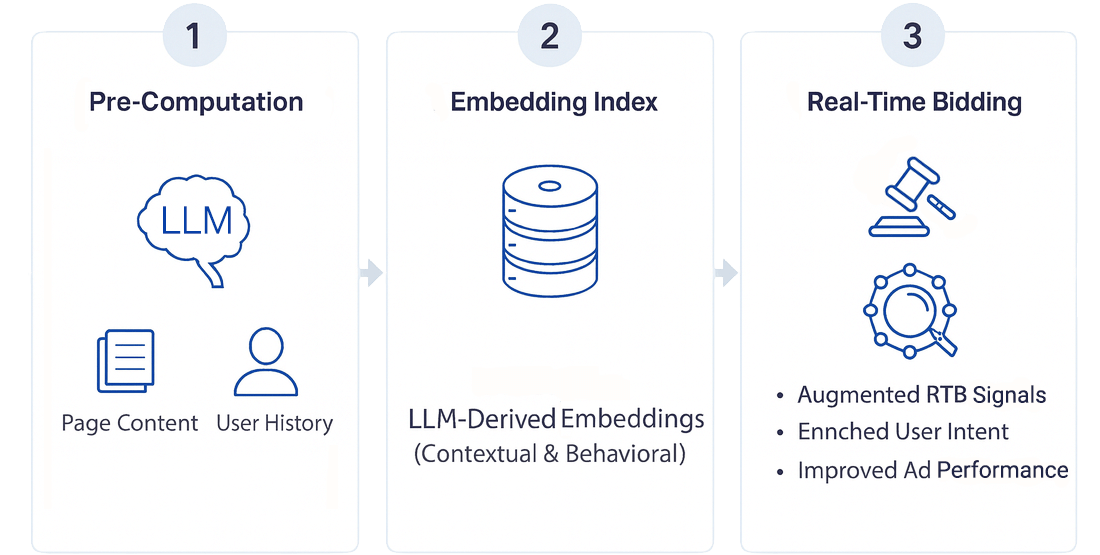Semantic & Intent Fusion Targeting (SIFT) represents the next generation of contextual advertising. Instead of relying solely on keywords or legacy segments, SIFT uses pre-computed LLM-derived embeddings to understand page content and user intent at programmatic speed. By querying billions of URLs and anonymized behavioral signals through fast vector similarity search, SIFT adds high-propensity semantic signals to standard RTB inputs—without the latency of in-auction LLM inference.
Research Objectives
- Evaluate whether LLM-derived embeddings improve business outcomes (CPA, ROAS, conversion rate) in programmatic bidding versus:
- Standard RTB-only approaches
- Curated keyword/interest audiences
- Identify which configuration performs best and under what conditions.
Research Questions
- How much uplift do embedding‑based tactics deliver versus RTB-only and curated audiences in live campaigns?
- Which variant performs better and by what margin:
- Contextual embeddings only, or
- Contextual + anonymized user-sequence embeddings?
- For which campaign objectives (acquisition vs. engagement) and KPI types (purchases, sign-ups, product views) do we see the most significant and consistent gains?
How it works

Pre-Computation
- LLMs analyze page content and user browsing sequences
- Generate semantic embeddings for ~4 billion URLs
- Create behavioral embeddings for millions of anonymized users
- Refresh hourly to maintain currency
Embedding Index
- Store pre-computed embeddings in fast vector database
- Enable sub-millisecond similarity search
- Maintain both contextual (page) and behavioral (user) signals
Real-Time Bidding
- Query embedding index at auction time via vector similarity
- Augment standard RTB signals with semantic intelligence
- Make informed bid decisions without in-auction LLM latency
- Deliver improved ad performance through enriched user intent understanding
Methodology & Approach
| Design | This is a true A/B split-test run within your live open-web display or online video campaigns. We maintain equal pacing, matched creative, and identical attribution across all arms. |
| Test Arms |
|
| Technology | The system uses a pre-computed embedding index with ~4 billion URLs and millions of anonymized users, refreshed hourly by Cognitiv. This index is queried via vector similarity at auction time to augment RTB signals. |
| Requirements | Participating brands fund the ad spend (plan for ~$50K minimum for high-volume KPIs). You must implement a standard pixel/postback for your primary KPI. |